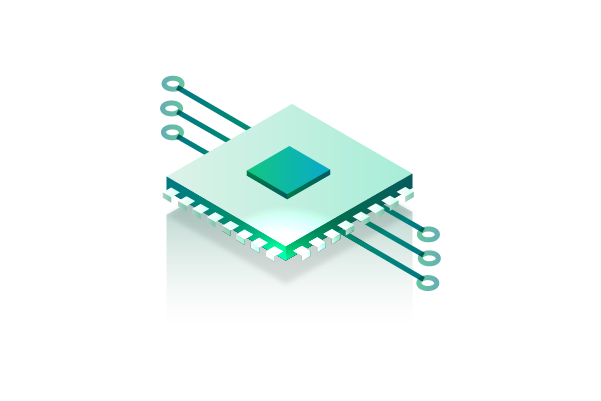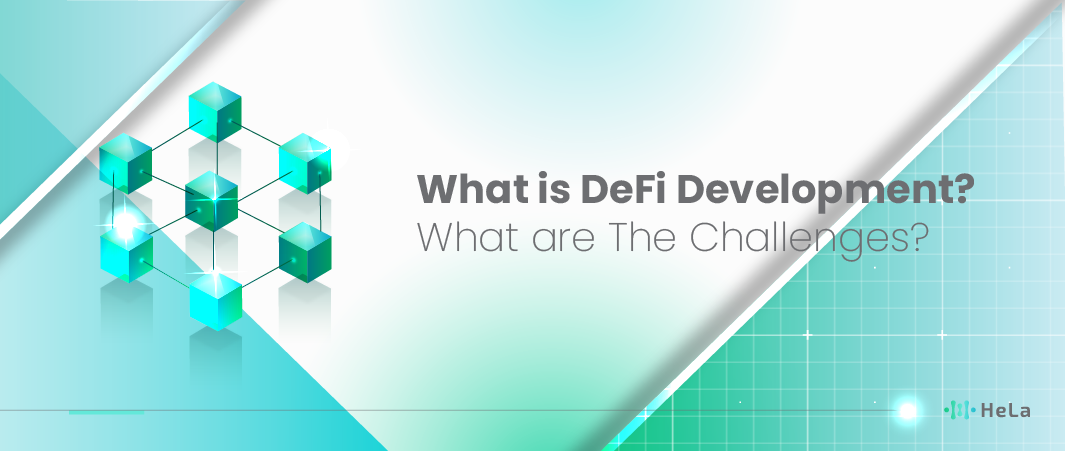DeFi, or Decentralized Finance, represents a transformative approach to financial services, utilizing blockchain technology to create financial applications that operate without traditional intermediaries. This innovative model aims to enhance transparency, efficiency, and accessibility in the financial sector by enabling peer-to-peer transactions, decentralized lending, and other financial activities on blockchain platforms. What are The Challenges? While the potential of DeFi is substantial, it also faces significant hurdles that developers and entrepreneurs must address to unlock its full potential. Key challenges include ensuring robust security, achieving scalability, navigating evolving regulatory landscapes, and improving user experience.
Understanding these challenges is crucial for anyone interested in the future of finance. As DeFi continues to evolve, addressing these issues effectively will be pivotal in shaping a secure and user-friendly decentralized financial ecosystem. Dive into this article to explore the complexities of DeFi development, discover the strategies being employed to overcome these obstacles, and gain insights into how DeFi could reshape the financial landscape for a more inclusive and innovative future.
Understanding DeFi Development

DeFi (Decentralized Finance) development as a term refers to the creation of financial applications on blockchain, especially Ethereum, to provide decentralized solutions to centralized financial services. In contrast to the centralized approach of traditional finance, DeFi employs smart contracts, which are computer programs that facilitate financial operations autonomously. This facilitates peer-to-peer financial transactions that directly involve individuals without the involvement of a third party. DeFi development involves building decentralized solutions for things like lending, borrowing, trading, and investing without involving intermediary organizations. They seek to democratize and decentralize the financial services industry so that anyone with internet access can use these services.
The creation of DeFi applications requires knowledge of the underlying blockchain and the basic idea of Smart Contracts. Solidity is currently the predominant programming language that developers use to write smart contracts on the Ethereum blockchain. Smart contract developers have to make sure that their codes are both secure and fast, because otherwise, the losses from hacking can be enormous. Various DeFi platforms working together create multiple contract interplays, which may be challenging for developers to manage, especially if they are not well-versed in decentralised systems. Furthermore, DeFi development requires a good understanding of interoperability with other DeFi protocols as well as the token standards like the ERC-20 for fungible tokens and the ERC-721 for non-fungible tokens.
However, one of the main problems in DeFi development is to make it safe and scale. Since DeFi relies on decentralization and peer to peer processes, the smart contracts are vulnerable to hacking attacks. It is the responsibility of the developers to contain and eradicate these vulnerabilities through the code testing and auditing process. Another issue is the capability to scale, for instance, in Ethereum networks, high traffic loads may cause slow transaction speeds and expensive fees. To address these issues some developers are already using layer-2 solutions, which are developed on top of the primary blockchain.
Also Read: Top 10 Defi Protocols to Know in 2024
The further development of DeFi technologies is quite prospective, and there are trends such as cross-chain connectivity and decentralized decision making. Inter blockchain communication means that assets and data can be transferred from one blockchain to another to support more diverse and integrated DeFi systems. The decentralised decision making using tokens and whose votes are used to alter the protocols of the platform is gaining popularity as users have their say on the kind of platform being offered to them. In the future, developers will continue to work tirelessly towards unlocking the full potential of the ecosystem and improving its security, scalability, and convenience.
The Use Cases Of DeFi
DeFi encompasses many applications that are designed to act as a replacement for centralized financial services and are built on the blockchain. This financial district has a number of applications of which the most common one is lending and borrowing. Aave and Compound provide users with an ability to deposit their assets and get passive income out of them or borrow assets by offering collateral. These procedures are to be conducted through the use of smart contracts, thereby eradicating the need for banks or credit check. Borrowers get an opportunity to access funds without much delay, while lenders get the chance to earn an income from their surplus capital. This is secure and transparent as data is recorded to a blockchain, and users have full control over their property and data.
Another important use case is decentralized exchanges (DEXs) like Uniswap and SushiSwap. These platforms enable people to exchange cryptocurrencies with direct counterparts without a third party’s intercession. CEXs keep funds in a central account, while DEXs allow peer to peer trading through smart contract interactions. This minimizes the threats of hacking or misuse of funds by a central controller and leaves users with more privacy and control. Another source of income is trading fees, where liquidity providers can earn fees by lending their money to trading pools, which makes it an approach to connect with the exchange market.
DeFi also opens up new possibilities in asset management. Through decentralized asset management protocols like Yearn Finance, users can automate their investment strategies. These platforms use smart contracts to optimize returns on different assets by automatically shifting funds between various DeFi protocols. Additionally, tokenized assets allow users to invest in real-world assets, like real estate or stocks, on the blockchain. By tokenizing these assets, DeFi platforms make them more accessible and liquid, enabling fractional ownership and global trading.
Lastly, DeFi introduces innovative financial products like stablecoins and insurance. Stablecoins, such as DAI and USDC, are cryptocurrencies that maintain a stable value by being pegged to traditional currencies like the US dollar. They play a crucial role in DeFi by providing a stable medium of exchange and store of value within the volatile crypto market. Meanwhile, decentralized insurance platforms like Nexus Mutual provide coverage for smart contract risks, offering a safety net for users in the DeFi space. These insurance products are governed by decentralized communities, providing an alternative to traditional insurance companies. Together, these use cases demonstrate how DeFi is reshaping the financial landscape by offering more inclusive, transparent, and innovative financial solutions.
The DeFi App Development

DeFi (Decentralized Finance) App Development is the process of creating financial platforms that operate in a decentralized manner on blockchain networks. In DeFi systems, there is no central entity controlling transactions or decisions, instead, protocols run automatically based on smart contract code. DeFi apps enable users to access financial services such as lending, asset exchanges, insurance, and trading without the need for traditional intermediaries like banks. Here’s a deeper explanation of DeFi App Development:
Development Process
To create a decentralized application in DeFi, one needs to define smart contracts, which are pieces of code that self-execute in response to specified stimuli. These smart contracts operate on blockchain platforms such as Ethereum, Binance Smart Chain, or Solana.
Smart contract code is also vulnerable to being hacked if the developers do not ensure proper programming security. After that, developers should design the UI/UX of the protocol so that the users can easily interact with it without experiencing security breaches.
Integration with Blockchain
DeFi apps rely on blockchain to record all transactions. Every transaction is recorded transparently and immutably on the blockchain network. Therefore, developers need to choose the right blockchain for their application, considering factors like transaction costs, network speed, and compatibility with various crypto assets.
Some blockchains, such as Ethereum, have a highly developed DeFi ecosystem, but with high transaction fees. Other alternatives like Binance Smart Chain or Solana offer lower transaction costs and higher speed, although their ecosystems may still be in the development stage.
Security and Auditing
Security is the most critical aspect of DeFi app development. Since these apps manage user funds, vulnerabilities in the smart contract code can lead to significant losses. Therefore, third-party security audits are crucial before launching a DeFi App.
These audits involve a detailed review of the code to identify potential vulnerabilities or bugs that could be exploited. Additionally, developers should consider implementing extra security measures like multisig mechanisms, bug bounties, and insurance pools to protect users.
Regulation and Compliance
DeFi app developers must also consider regulatory aspects. Although DeFi operates outside traditional banking frameworks, various countries are beginning to develop regulations to govern DeFi activities.
Developers need to ensure that their app complies with the regulations in the jurisdictions where they operate, including issues like KYC (Know Your Customer) and AML (Anti-Money Laundering). However, since DeFi is global, developers often have to navigate complex and differing regulatory landscapes across various countries.
Challenges in DeFi Development

The development of DeFi (Decentralized Finance) presents unique opportunities, but it also comes with a set of significant challenges that developers and entrepreneurs must navigate. These challenges are not only technical but also involve security, regulatory, and user experience considerations. Here’s a deeper look at the major challenges in DeFi development:
Security Risks
One of the most critical challenges in DeFi development is security. Since DeFi platforms manage large amounts of user funds, any vulnerabilities in the smart contract code can lead to catastrophic losses. Hacks and exploits have been a recurring issue in the DeFi space, with attackers often exploiting bugs in smart contracts or flaws in the protocol logic.
Even well established platforms have fallen victim to such attacks, highlighting the importance of rigorous code audits and continuous security assessments. Developers must prioritize building secure code, implementing best practices like multisig wallets, and conducting frequent security audits to minimize risks.
Scalability Issues
DeFi applications often face scalability challenges, especially when they operate on popular but congested blockchain networks like Ethereum. High network activity can lead to slow transaction processing times and exorbitant gas fees, making it costly for users to interact with the platform. This limits the accessibility and scalability of DeFi solutions.
While some developers are exploring alternative blockchains like Binance Smart Chain, Solana, or layer-2 solutions like Optimism and Arbitrum, these options come with their own trade-offs in terms of security, decentralization, and ecosystem maturity. Achieving a balance between scalability and security remains a significant challenge.
Regulatory Uncertainty
The regulatory landscape surrounding DeFi is still in its early stages and varies greatly across different regions. Governments are increasingly paying attention to DeFi platforms due to concerns about money laundering, fraud, and consumer protection. Developers must navigate a complex and evolving regulatory environment, ensuring compliance with laws related to Know Your Customer (KYC) and Anti-Money Laundering (AML).
However, the decentralized nature of DeFi makes it difficult to apply traditional regulatory frameworks. As regulators grapple with how to manage this new financial paradigm, developers must stay informed and proactive in addressing compliance issues, while also striving to preserve the decentralized ethos of DeFi.
User Experience and Adoption
Another challenge in DeFi development is creating a user experience that is intuitive and accessible to a broad audience. Currently, interacting with DeFi platforms often requires a high level of technical knowledge, including setting up crypto wallets, understanding gas fees, and navigating complex interfaces.
Also Read: Top 7 AI Development Companies to Check (Updated 2024)
This complexity can be a barrier to mainstream adoption. To overcome this challenge, developers need to design user-friendly interfaces that simplify the DeFi experience, reducing the learning curve for new users. Additionally, educating the public about the benefits and risks of DeFi is essential to fostering wider adoption. Improving the user experience, while maintaining security and decentralization, is a delicate balance that requires thoughtful design and innovation.
The Future of DeFi Development
The future of DeFi development is poised to push the boundaries of traditional finance by leveraging blockchain technology to create more advanced, accessible, and secure financial systems. One key trend shaping the future is the push for improved scalability. Current DeFi platforms, particularly those built on Ethereum, often face issues with network congestion, leading to high transaction fees and slower processing times. Developers are focusing on layer-2 solutions like rollups and sidechains, which operate alongside the main blockchain to process transactions more efficiently. These technologies promise to significantly reduce costs and enhance the user experience, making DeFi more scalable and ready for mass adoption.
Another exciting area for future DeFi development is cross-chain interoperability. Currently, most DeFi applications are siloed within specific blockchains, limiting their flexibility. Cross-chain bridges and protocols that enable assets and data to move seamlessly between different blockchains will expand the DeFi ecosystem, allowing users to access a wider range of services across multiple platforms. This interoperability will also foster collaboration between different blockchain communities, accelerating innovation and expanding DeFi’s reach to new markets.
Decentralized governance is expected to play an increasingly prominent role in the future of DeFi. Protocols like Uniswap and Aave have already implemented governance models where token holders vote on key decisions, such as protocol upgrades and fee structures. This shift towards decentralized governance empowers users and developers to have a say in the direction of the platform, creating a more community-driven ecosystem. As governance models evolve, we may see the rise of more sophisticated decentralized autonomous organizations (DAOs) that manage complex financial systems without central oversight, further enhancing the decentralization of finance.
The integration of real-world assets into DeFi platforms is another major trend that could shape the future of development. Tokenizing real-world assets like real estate, commodities, or equities and trading them on decentralized platforms opens up new investment opportunities and increases liquidity in traditionally illiquid markets. This blending of traditional finance and DeFi will bring more legitimacy to the space, attract institutional investors, and expand the range of use cases for decentralized finance. As regulations and infrastructure around DeFi continue to mature, the line between traditional finance and decentralized finance will likely blur, leading to a more inclusive and interconnected global financial system.
Conclusion
What is DeFi Development? It refers to the creation and implementation of decentralized financial applications that leverage blockchain technology to offer financial services without traditional intermediaries. This innovative approach aims to democratize access to financial services, providing more transparency, security, and control to users. However, DeFi development is not without its challenges. Key obstacles include ensuring security, managing scalability, navigating regulatory uncertainties, and enhancing user experience. Each of these challenges requires careful attention and strategic solutions to ensure that DeFi applications can operate effectively and securely in a rapidly evolving landscape.
What are The Challenges? Security risks remain a critical concern, as vulnerabilities in smart contracts can lead to significant financial losses. Scalability issues also pose a problem, with high transaction fees and slow processing times impacting user accessibility. Additionally, the evolving regulatory environment adds complexity, as developers must balance compliance with the decentralized nature of DeFi. Finally, improving user experience is essential for broader adoption, requiring intuitive designs and user education. Addressing these challenges is crucial for the future success of DeFi, as developers work to create robust, scalable, and user-friendly financial solutions that can transform the financial industry while overcoming these significant hurdles.
Disclaimer: The information provided by HeLa Labs in this article is intended for general informational purposes and does not reflect the company’s opinion. It is not intended as investment advice or a recommendation. Readers are strongly advised to conduct their own thorough research and consult with a qualified financial advisor before making any financial decisions.

